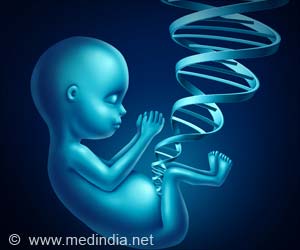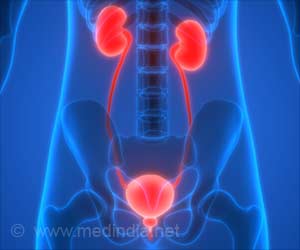Studies show cell-free DNA (cfDNA), including cf-nDNA and cf-mtDNA, is released during stress, offering a potential biomarker for monitoring stress responses.

‘cf-nDNA levels are significantly higher in saliva than in plasma, suggesting saliva could be a simple, non-invasive stress-tracking tool. #salivabiomarkers #cfDNA #medindia’





The study focused on measuring cf-nDNA and cf-mtDNA levels in response to acute stress in both men and women, assessing both plasma (blood) and saliva samples. The goal was to understand how stress triggers the release of these DNA fragments and if there were gender differences in the response (1✔ ✔Trusted SourceCell-free DNA release following psychosocial and physical stress in women and men
Go to source).
Participants were subjected to two types of stress: psychosocial stress (through the Trier Social Stress Test, or TSST) and physical stress (via a bicycle ergometer exercise). Both cf-nDNA and cf-mtDNA were measured before and after stress exposure using a minimally invasive method for blood collection, ensuring that the process was simple and could be broadly applied in future research.
Plasma cf-nDNA levels increased following both psychosocial and physical stress. However, the response was stronger after physical stress. In particular, men showed a greater increase in cf-nDNA after physical exertion, likely due to their higher levels of physical activity during the test.
Women also showed an increase, though it was more moderate. Interestingly, women using oral hormonal contraception had slightly higher cf-nDNA levels following psychosocial stress compared to women who were not using contraception.
Mitochondrial DNA Release The release of cf-mtDNA was more variable. Women using oral hormonal contraception showed the highest levels of cf-mtDNA after both stress tests, but the data was inconsistent. This variability underscores the need for more research to better understand the triggers of mitochondrial DNA release and the potential health implications.
Advertisement
Saliva as an Alternative to Blood In addition to blood samples, the study also analyzed saliva for cf-nDNA and cf-mtDNA. Interestingly, both types of DNA were found to be present in much higher concentrations in saliva compared to plasma. While cf-nDNA levels in saliva showed some changes in response to stress, the results were less clear for cf-mtDNA.
Advertisement
Future research is necessary to refine the methods for detecting cfDNA and to explore its potential as a biomarker for monitoring stress and related health conditions. By developing more accurate and less invasive diagnostic methods, scientists hope to improve the way we measure and respond to stress.
Reference:
- Cell-free DNA release following psychosocial and physical stress in women and men - (https://www.nature.com/articles/s41398-025-03242-5)
Source-Medindia















